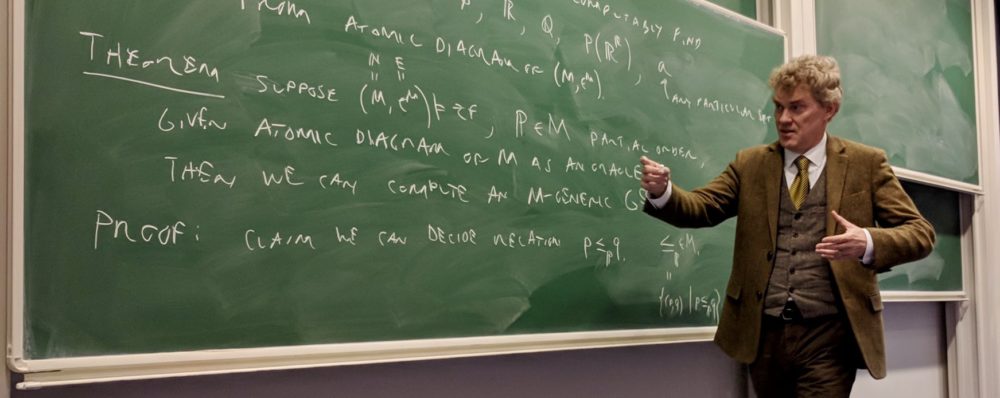[bibtex key=”BlairHamkinsOBryant2020:Representing-ordinal-numbers-with-arithmetically-interesting-sets-of-real-numbers”]
Abstract. For a real number

[bibtex key=”BlairHamkinsOBryant2020:Representing-ordinal-numbers-with-arithmetically-interesting-sets-of-real-numbers”]
Abstract. For a real number
Burak Kaya successfully defended his dissertation, “Cantor minimal systems from a descriptive perspective,” on March 24, 2016, earning his Ph.D. degree at Rutgers University under the supervision of Simon Thomas. The dissertation committee consisted of Simon Thomas, Gregory Cherlin, Grigor Sargsyan and myself, as the outside member.
The defense was very nice, with an extremely clear account of the main results, and the question session included a philosophical discussion on various matters connected with the dissertation, including the principle attributed to Gao that any collection of mathematical structures that has a natural Borel representation has a unique such representation up to Borel isomorphism, a principle that was presented as a Borel-equivalence-relation-theory analogue of the Church-Turing thesis.
Burak Kaya | MathOverflow profile | ar
Abstract. In recent years, the study of the Borel complexity of naturally occurring classification problems has been a major focus in descriptive set theory. This thesis is a contribution to the project of analyzing the Borel complexity of the topological conjugacy relation on various Cantor minimal systems.
We prove that the topological conjugacy relation on pointed Cantor minimal systems is Borel bireducible with the Borel equivalence relation
. As a byproduct of our analysis, we also show that Δ + ℝ is a lower bound for the topological conjugacy relation on Cantor minimal systems. Δ + ℝ
The other main result of this thesis concerns the topological conjugacy relation on Toeplitz subshifts. We prove that the topological conjugacy relation on Toeplitz subshifts with separated holes is a hyperfinite Borel equivalence relation. This result provides a partial affirmative answer to a question asked by Sabok and Tsankov.
As pointed Cantor minimal systems are represented by properly ordered Bratteli diagrams, we also establish that the Borel complexity of equivalence of properly ordered Bratteli diagrams is
. Δ + ℝ
